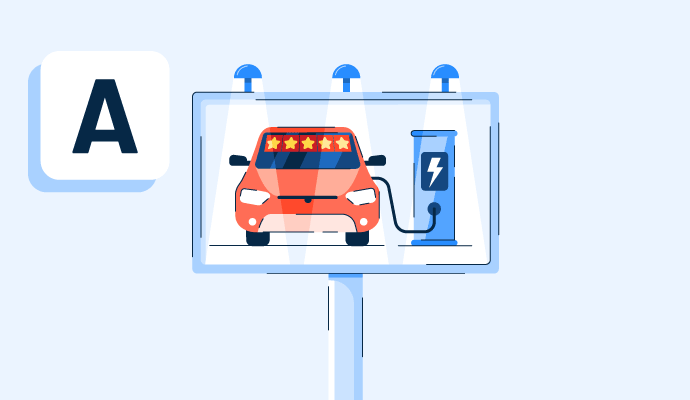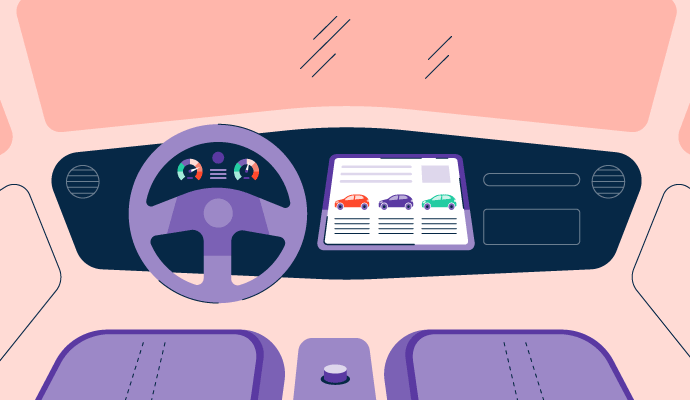What is automotive marketing?
Automotive marketing is a specialized type of marketing in which car dealerships advertise to people in the market to purchase a car. In addition to promoting vehicles, automotive marketing encompasses advertisements for auto parts and vehicle-related services. Many automotive marketers use traditional and digital advertising strategies to reach the target audience.
Automotive marketing software helps car dealers create online listings for cars, develop marketing materials and collateral, and capture leads.
Automotive marketing tactics
Car dealers should use a variety of marketing tactics to achieve their goals and reach ideal customers. Some of the common tactics automotive marketers use include:
- Television and radio advertisements. Many car dealerships rely on traditional marketing methods like television commercials and radio advertisements. Radio ads can be particularly beneficial as listeners may actually be in a vehicle while listening. These methods work best for reaching a broad audience.
- Print mediums. Similar to television and radio ads, some car dealers use print mediums like newspapers, magazines, and billboards.
- Social media. Platforms like Facebook, Instagram, and X (formally known as Twitter) raise brand awareness and provide car dealerships with an opportunity to engage with a more diverse range of customers. Social media channels can also be beneficial for sharing deals quickly.
- Email marketing. Car dealerships can use email marketing tactics, such as sending promotional emails and newsletters to a subscriber list of previous and prospective customers. Topics might include deals, special promotions, and new models.
- Pay-per-click (PPC) advertising. Paid advertising campaigns on search engines and social media platforms can drive targeted traffic to their websites.
- Search engine optimization (SEO). Optimizing websites and online content to rank higher in search engine results pages, particularly for specific types of vehicles and locations, makes it easier for potential customers to find car dealers and their services.
Benefits of automotive marketing
Automotive marketing offers significant advantages to dealerships and stakeholders in the automotive industry. Key benefits of automotive marketing include:
- More sales. Effective automotive marketing strategies generate more vehicle sales by motivating customers to purchase. Automotive marketing helps dealers and brands reach customers that they may not have considered otherwise, which boosts sales and profit.
- Better brand awareness. Successful automotive marketing efforts not only increase sales, but also build and strengthen brand recognition and awareness. This makes it easier for consumers to identify and trust brands, especially in a competitive market among similar vehicle manufacturers.
- Increased customer loyalty. Beyond a customer’s first purchase, ongoing marketing builds long-term relationships with buyers. Deep customer loyalty encourages repeat purchases and turns customers into brand advocates, expanding the car dealer’s customer base.
Challenges in automotive marketing
Automotive marketing poses some interesting challenges due to its complex and niche nature. Some of the key challenges in automotive marketing include:
- Digital transformation shifts. Traditional marketing techniques, like newspapers, radio ads, television commercials, and billboards, have always been a crucial element of automotive marketing. While these tactics are still vital components, many marketers are moving toward digital platforms, including online advertising and social media, to evolve with popular marketing strategies.
- Evolving consumer preferences. Consumers’ preferences and behaviors change, which means automotive marketers need to develop their campaigns and advertising strategies to change as well. Brands must be able to differentiate themselves while meeting consumers’ needs to remain competitive.
- Global marketing considerations. The automotive market is global, so brands must rise to the challenge of tailoring their marketing strategies to specific regions and cultures.
Best practices in automotive marketing
Developing an effective automotive marketing strategy makes it easy for businesses to target their audience at the right time to secure sales. Incorporating the following best practices ensures the highest likelihood of success.
- Take advantage of customer reviews. Since vehicles are expensive purchases that require careful consideration, many potential buyers want to learn more about a company and their previous sales from real buyers. Customer reviews and testimonials build trust with leads and provide information that marketing materials alone can’t generate.
- Focus on optimizing SEO for local search results. Since the automotive industry is large, businesses should focus on optimizing their website to appear in search results based on local information. Outside of product availability and customer service, buyers are likely to search for locations nearby and may select one over another due to proximity.
- Use a combination of traditional and digital marketing tactics. When working on an automotive marketing plan, consider incorporating traditional and digital tactics. Each approach has advantages and allows businesses to target different customer segments, making them part of a complementary strategy.
Consider these automotive marketing strategies for the best results.

Alyssa Towns
Alyssa Towns works in communications and change management and is a freelance writer for G2. She mainly writes SaaS, productivity, and career-adjacent content. In her spare time, Alyssa is either enjoying a new restaurant with her husband, playing with her Bengal cats Yeti and Yowie, adventuring outdoors, or reading a book from her TBR list.

